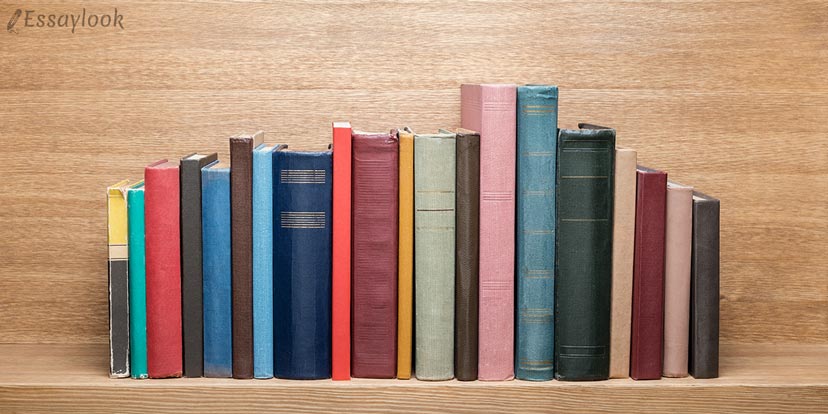
Something About the Creator
Francois Rabelais was primarily a scientist, physician and naturalist. He never mocked science and firmly believed in it. This was the unchanging essence of his views. But there were also such hours in his life when he wanted to have fun, and his furious gaiety was poured out by such streams, where ingenious ideas and elegant wit were mixed with coarse platitudes, vulgar jokes and even with obscenity. He does not have a subtle taste, but there is as much variety in the content of his works as in the works of nature. It cannot be said that he did not have art, but it does not obey any rules. The essay about him and his work will be very interesting if you order it at essaylook.com.
Rabelais is the first singer of the Renaissance, who dared to rebel against medieval inertia and the lack of rights of common sense. He contrasted the inhuman dogmas with the ideals of freedom and humanism. We are talking about the most voluminous literary monument of this epoch.
The comic effect in the novel is placed in the form of a rude humor, understandable to a simple person. It was ordinary people who were most oppressed by the church, because this institution was a monopolist in the field of enlightenment among the broad masses of the people.
Jokes are associated with the human body and physiology, the consumption of food and wine, sexual relations and venereal diseases. All these themes were completely uncharacteristic of medieval literature, which was closely connected with the religious tradition. In the course of the historical literary process, attempts were repeatedly made to "adapt" Rabelais to the changing notions of morality, but as you know, you cannot throw out the words from the song – the "cleansed" novel is no doubt inferior to the original.
The language in the novel abounds with obscene figures of speech and caricatured parts of sacred texts. The text is inextricably linked with the popular culture of France of the late Middle Ages and the Renaissance. The images of the main characters, Gargantua and Pantagruel, whose names are taken directly from French folklore, symbolize the Renaissance with its rejection of the traditional life orientations of the Middle Ages. The main idea is the return of interest in secular art and world knowledge, free from dogmas and limitations.
The language of the author is whimsical, complex, heap of turns and means of artistic expressiveness. It confuses the reader, bowls out, forcing to re-read the sentence more than once in pursuit of the essence.
Genre, Features and Innovation of the Novel
It is a satirical novel created with the help of such literary methods as grotesque and hyperbole. Unfortunately, the meaning of many sarcastic attacks by Francois Rabelais is now lost, so voluminous work is read strained, although it was supposed to amuse the audience as a fairground booth (according to style, the novel reminds stories of a clown who maliciously ridicules the way of life without fear of incurring punishment).
The author denounces the eternal human vices and ridicules the weaknesses, shortcomings and problems of his time. The favorite objects for Rabelais ridicule are the Catholic Institute of Monasticism and the church, which is not surprising – he knew about laziness, ignorance, greed and hypocrisy of the clergy not by hearsay, as he lived in a monastery when he was young. In addition, it is known that Rabelais was a physician, therefore, he had rational thinking and agile mind, not a blinkered consciousness of a fanatic.
Medieval scholasticism got its fair share of troubles from his pen. It was divorced from the reality, which is so loved by the main heroes in all its manifestations. Blind faith and religious hypocrisy aroused in Rabelais such an aversion that he did not hesitate to take a swing even at the Holy Scripture, some episodes of which were cleverly parodied in the novel. So, no wonder that all parts of the novel were blamed by the theological faculty of the Sorbonne as heretical.
Composition in the Novel

The composition of the novel is a free alternation of episodes and images. The binding idea of the novel is a grotesque of a national character.
The grotesque-comic structure of the novel has several functions. It entices the readers, interests them throughout the narrative and facilitates the perception of deep thoughts at the heart of the creative method. On the other hand, it masks them, that is, serves as a shield against censorship. Foolishness forms a powerful comic effect in the medieval literature on the threshold of the new epoch.
Not all thoughts of the author are deciphered. A special case of the grotesque is the size of Gargantua in the first two books. This is the hyperbolized desire of nature to free itself from the yoke of medieval norms. The main idea of the novel is to show the introduction to the national French culture, its origins, and not the slavish obedience of the eerie demagogy of Catholicism.
Main Characters: Characterization, Meaning of Images, Portrait
-
Who Is Gargantua?
This is the king of the Utopia state of the giants. He appears in the first and episodically in the second and third books of the novel. The image of Gargantua is a symbol of the maturing Renaissance with its anthropocentric position. A human is not a slave of the Lord, he or she literally grew up, became a giant, and not a louse.
-
Who Is Pantagruel?
This is the son of Gargantua, the prince of the kingdom of Utopia. He appears in the novel from the second book. It is a type of progressive human of the Renaissance, who is interested in several scientific disciplines and art forms.
-
Who Is Friar John of the Funnels and Gobbets?
This is the monk of the Order of St. Benedict. He appears in the first, third, fourth and fifth books. He is a young man, quick, smart, cheerful, brave, tall, lean, throaty, nosy. He perfectly manifests himself, both during the war with Picrochole, and during the numerous feasts of the father and his son.
-
Who is Panurge?
This is the student from Touraine who did not finish his studies. He appears in the second book. He made friends with Friar John in inexhaustible love of life and passion for all sorts of fun tricks. However, unlike the monk, Panurge is slightly cowardly. He himself says that he is not afraid of anything but dangers.
-
Who Is Epistemon?
This is the former mentor of Pantagruel. Like Panurge, he appears in the novel in the second book. He is the most educated of all the friends, often begins various arguments of an abstract nature, which does not prevent him from being a faithful friend and a good drinking companion.
Analysis of the Novel

There are three main themes in the novel:
- Education of Gargantua. The author uses the opposition of medieval and Renaissance education. But there is a parody game even on such a serious topic (for example, exaggeration of diligence of educators-humanists);
- War with Picrochole. The confrontation of Picrochole and Gargantua is a comparison of the medieval and humanistic ruler;
- The Theleme Abbey. First, this is the opposition of the medieval monastery and the utopia of the new world. Friar John is the product of the monastery walls and at the same time their mocking denial. The motto of the monastery is "Do what you want" – a mocking transformation of the monastic rule. People are terribly educated there: they know 5-6 languages, they can write poetry in them, but how do they use their knowledge? What benefit has the world from their learning? Monks do not help the laity to become better, they just flee from problems, encouraging their egoism, hoping to pray for an easy fate in paradise. The author ridicules this position.
In the second book, the main hero is a good giant, a kind fellow, a glutton and a lover of a drink. The motive of thirst, which accompanies his birth, is the greed of knowledge and the usual thirst. The parallel of binge and science goes through the whole book. The letter of father to son is a manifesto of the epoch. It contains the apology for sciences, the apology for the movement of history and the development of culture.
The third book is an organic continuation of the first two ones. All proportions change in it: the action lasts only 30 days, the hero of Pantagruel is already of the normal size.
The fourth and fifth books are more serious, the folk-carnival basis is weakened. Islands most often symbolize social institutions, values in these books. There is no protagonist, all are travelers.
What Is the End of the Novel?
The author showed the voyage to the truth, a journey in search of this coveted treasure. The truth is that there is no absolute truth, only fata morgana emerges in front of adventurers. Therefore, they drink and enjoy life without the ghost of death and doubtful promises of divine mercy in exchange for earthly happiness.
